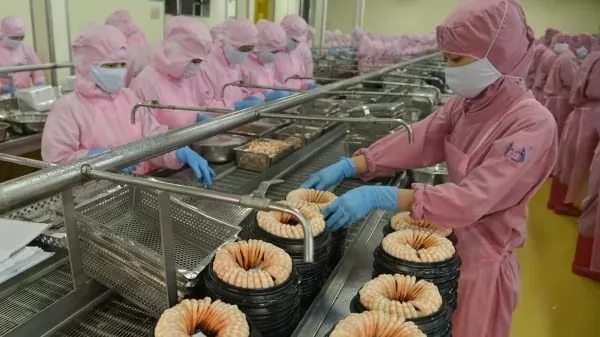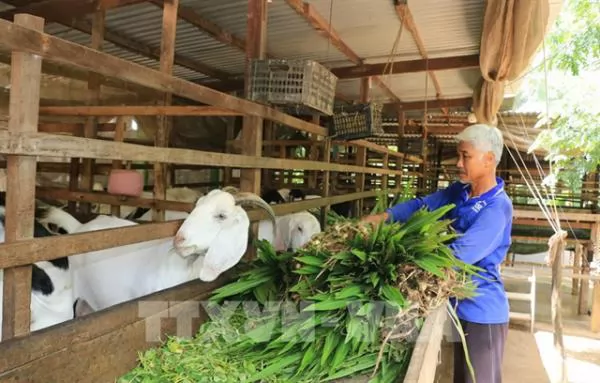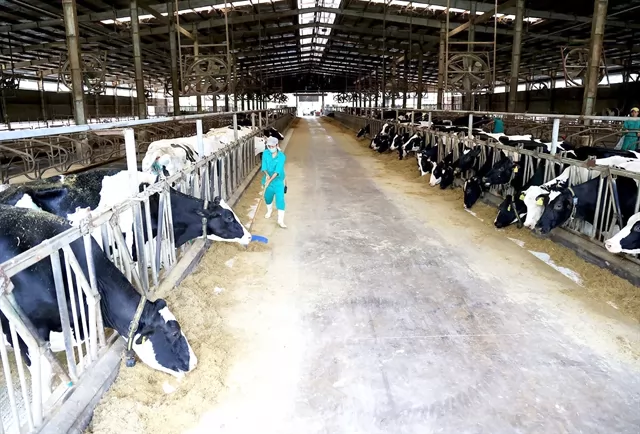Seafood exports to Japan encounter difficulties with the Doxycycline antibiotic indicator

Japan's maximum acceptance threshold for the Doxycycline indicator in imported seafood is 10 times stricter than the maximum acceptance thresholds of many other markets.
(VAN) The allowable maximum residue threshold that Japan stipulates for the Doxycycline antibiotic in imported seafood is causing difficulties for seafood exports to this market.
According to the Vietnam Association of Seafood Exporters and Producers (VASEP), reflections of businesses exporting shrimp to the Japanese market show that there is currently a major inadequacy related to the Doxycycline antibiotic indicator in seafood imported into Japan.
Specifically, regarding the Doxycycline antibiotic indicator, Japan's regulation is said to be "too strict" compared to the acceptance thresholds of many other markets. This is causing great difficulties and disadvantages for Vietnamese seafood exports to Japan because this antibiotic is still allowed to be used in aquaculture in Vietnam.
According to preliminary research by VASEP and businesses, currently, many markets do not ban the use of the Doxycycline antibiotic (belonging to the Tetracycline group) in aquaculture and do not test the residue of this antibiotic in farmed aquatic products imported.
Some markets, such as the EU, China, and New Zealand, test this indicator, but all stipulate the allowable maximum residue limit (MRL) of 100 ppb. This is considered an appropriate level, with a risk assessment, that Vietnam's strictly controlled farmed seafood can fully meet.
However, Japan has only regulated the MRL level of Doxycycline in products of the Perciformes ordo at 50 ppb and has not regulated the MRL level for other aquatic products. According to Japan's current regulations, for chemical and antibiotic indicators, there is no MRL-level regulation on a general limit of 10 ppb (Uniform limit) that will be applied to these indicators. This means that Japan's maximum acceptance threshold for the Doxycycline indicator in imported seafood is 10 times stricter than the maximum acceptance thresholds of many other markets.
Therefore, VASEP has just sent an official dispatch to the Ministry of Agriculture and Rural Development, requesting the Ministry to consider and give opinions to Japanese authorities so that the Japanese side can issue regulations on the allowable maximum limit (MRL) for the Doxycycline antibiotic that is equal to the level of other markets such as the EU, China, and New Zealand.
Japan has been one of Vietnam's three largest seafood import markets for many years. In 2023, Japan was the second-largest market for Vietnamese seafood, with a seafood export value to this market of USD 1.516 billion.
Author: Son Trang
Translated by Thu Huyen
Maybe you are interested

Goats pull Đồng Tháp Province farmers out of poverty
Breeding goats has helped many farmers in the Cửu Long (Mekong) Delta province of Đồng Tháp escape poverty and earn a steady income since the animal is easy and inexpensive to raise.

Tây Ninh Province developing more animal farms
The southeast province of Tây Ninh has gradually switched from breeding livestock on a small scale to farms.

Russia says it has delivered 200,000 tons of grain to African countries
The Russian Ministry of Agriculture said Tuesday it had shipped 200,000 tons of grain in humanitarian aid to six African nations, fulfilling the Kremlin's pledge to the continent last July.





